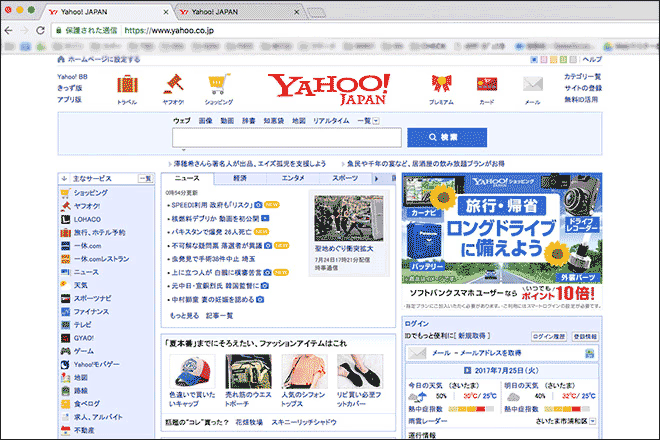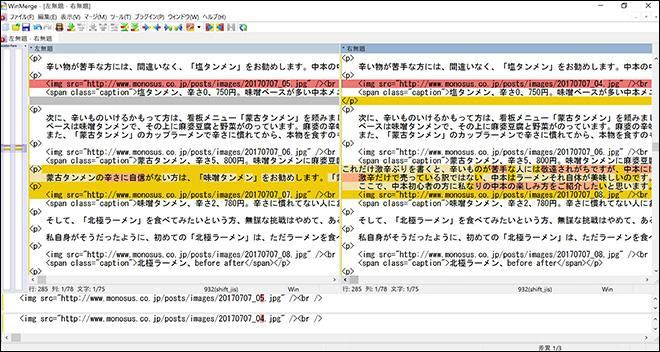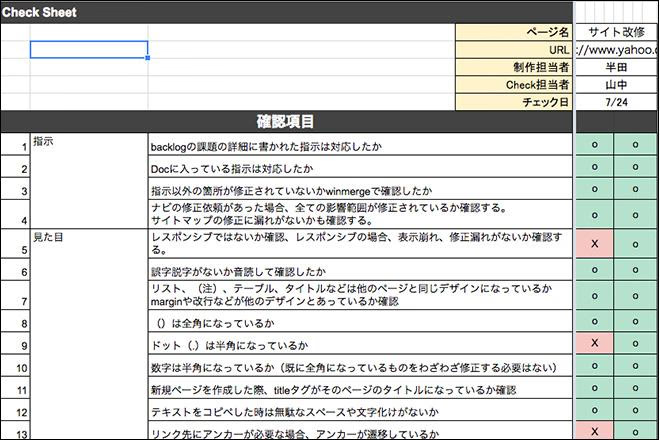Hello. This is Yamanaka from the Creative Department.
It has been a year since I joined Monosus, and I would like to share what I have learned and felt after moving from a different industry to the web industry and working in website operations for a year.
From "selling" to "making"
Before I moved to the web industry, I worked in sales and marketing, selling things.
While selling a variety of things, I felt that in an age where most things can be sold online, the products that salesmen need would be limited, and I felt that if I could create the products myself and sell them, I might be able to survive on my own without relying on an organization.
However, when I was thinking about what I could make without any skills in creating anything, I suddenly remembered the fun I had creating websites in my student days, and how I was completely absorbed in it.
At that time, I happened to meet a web designer and when I talked to him about my desire to change jobs to the web industry, he said to me, "I entered the industry with no experience either, and there are many people in the web industry with no experience, so if you're motivated, you can do it!" This encouraged me and I decided to make the change.
Once I made that decision, things moved quickly, and while attending web school I changed jobs to a company that operated a portal site. After that, I worked in the operation of an apparel e-commerce site, and then I finally joined Monosus, the web production company that I had always dreamed of.
Differences in the environments of a "sales company" and a "production company"
During my time in sales, it was considered a good thing to negotiate with as many customers as possible, and when I was at the office, I was only allowed to do phone sales to create business opportunities, and I was in an environment where I would be criticized if I showed even the slightest bit of lack of energy.So when I entered the web industry, I was surprised and refreshed to see everyone working quietly and diligently, but also felt a little cramped at first.
However, gradually, I began to feel happy in this environment where no one would scold me even if I was at work all day, and no one would get in trouble for eating sweets (laughs).
Also, in the case of sales, work rarely comes in if you just wait, and you have to go and get work yourself, but now I'm in a very fortunate environment where requests come in one after another (of course, this is because the sales staff get the work for me. I'm always very grateful).
I continued to work hard, savoring these small joys, but gradually things began to change.
Even if we can deliver the product, we can't maintain quality...what should we do?
At first, everything was new and I enjoyed every job, and I would repeatedly deliver the work as requests came in. However, as the amount of work I was responsible for increased, I found myself in a situation where "even though I could deliver, the quality was low."
When I was in sales, results were everything, and the process wasn't important. I was also taught to meet deadlines no matter what, so I prioritized deadlines over quality and made repeated mistakes on one project.
One of the projects I'm in charge of involves updating a certain union's website.
The work involved changing text and replacing images in response to system reforms, which at first glance seem simple, but we were unable to deliver the work without making a single mistake, and after repeating this process, the client told us, "We can't ask you to do the work with this quality."
Customers send us revision instructions in PDF format, but since these are generally handwritten, we also have to transcribe the text ourselves.
In addition, there are detailed rules for numbers in the text, such as half-width characters, () full-width characters, and "・" full-width characters. Also, you need to correct the text without making any mistakes, including where to insert it, whether indentation is necessary, and whether it is consistent with other pages on the site.
It may seem easy at first glance, but when I actually tried it, I was shocked, discouraged, and at a loss at the number of mistakes and oversights I made.
To be honest, at first, somewhere in my mind I thought, "It's human work, so it's inevitable that mistakes will happen..." (Sorry.)
But as long as you think like that, your thinking will stop and you won't be able to come up with any solutions. And most importantly, it's not a job that you receive money from customers.
So we thought thoroughly about how we could prevent mistakes from happening, made repeated improvements, and came together as a team to create a work flow that would allow us to deliver with 100% confidence.
I would like to explain this flow in detail.
A workflow that delivers with 100% confidence
A. Things to do before starting work (creating a sitemap)
Once we receive instructions from the customer, we identify all affected pages, create a sitemap, and make clear the full extent of the modifications.
Also, since we are going to deliver the differences, we would like to clarify here how many files are involved this time.

The site map will include all information such as the scope of work, labor hours, corrections, and verification browsers.
B. Perform update work
Next comes the actual update process.
Correct any parts of the text that need to be changed, and when you're done, check each part and mark the instructions as complete.
C. Work completed (ongoing check begins)
This is where we start checking the demons. We will check them in 7 stages.
First, the worker performs a five-step self-check.
1) Check for corrections
First, based on the instructions, we check each correction point one by one starting from the first page.

We will carefully check the instructions given to us by our customers.
2) Check for text differences
Next, we use the text comparison tool “difff ( https://difff.jp/ )” to compare the current site with the test version of the revised site and check for differences in the text.
When comparing with difff, the parts of the text that have been changed become immediately obvious, allowing you to check that you have made the necessary corrections and that there are no typos or omissions.

The text with the difference will turn blue, so you can see at a glance whether it has been corrected or not.
3) Check the appearance
Once the text check is complete, switch tabs between the current site and the test site to compare them and check for any irregularities in the layout or strange placement of the text.

By switching tabs, you can check whether the layout is correct.
4) Check the source
Next, use winmerge to compare the source before and after the work.
When replacing images, PDFs, or Excel files, there are cases where the file name does not need to be changed and cases where it is necessary to change it. We check whether this is done according to the rules and whether unnecessary tags have been deleted.

You can see at a glance whether the image file name has been changed or whether unnecessary tags remain.
5) Checklist check
Once you have completed this, use the checklist to check off the items.
It lists detailed rules and items that I have made mistakes on several times, so I can check them again to prevent minor mistakes. I believe that the quality of the checklist is important for each project, as it affects the quality of the finished product.

Although most of the information written here seems quite obvious, carefully checking each step will help you avoid making simple mistakes.
6) Double check by a third party
Once you have completed the five-step self-check, the next step is a double check by a third party.
I am currently in charge of this double check, but even after going through the above process once, I still sometimes find mistakes.
The eyes of the person in charge of the work and the eyes of a third party checking objectively are different. Although double checking requires extra man-hours, I think it is a necessary process.
7) Final check
Finally, we perform a final check based on the site map created in [A. Things to do before starting work] to ensure that there are no omissions in the differences to be submitted to the customer.
After doing all this, we will finally contact the customer to let them know about the test update.
The result is important, but the process is also important.
"Making" is hard work, but it's fun
Looking at it again, you might wonder why it took so much time and effort and whether it was really necessary to go to such lengths.
To be honest, that's what I thought at first too.
However, by creating a site map from the beginning, you can understand the scope of the revisions that need to be made and the delivery files will be clear, and by using a checklist, you can be sure to follow rules that you thought you remembered but have completely forgotten, or rules that only come up occasionally.
It may seem like an obvious thing to do, but by carefully completing each of these small tasks, the number of mistakes gradually decreased.
It was at this point that I finally realised that in the work of production, the process is just as important as the result.
My job changed from "selling" to "making," and I began to realize how difficult the "making" job is.
For me, I feel that making something is 100 times harder than selling something. (I think it depends on the product you are selling and the person's aptitude.)
Until now, we have looked at websites casually, but even publishing one page requires many steps to be completed, many people to be involved, and many decisions to be made.
Managing the progress of this is also difficult.
Being a lazy person, I was always thinking about whether I could cut corners or make things more efficient at first, but after I realized that by improving the quality of each step, the quality of the final product would also improve, I now try to do things more carefully, even if I find them "troublesome."
As a result, doing so eliminated requests for additional revisions, eliminated the need to redo work due to differences in understanding, and reduced the amount of work required.
I realized how sloppy the work had been up until now, and at the same time, I realized that the workmanship of the people involved is clearly reflected in the final product, which makes me realize the scary yet fascinating thing about "making things."
As a creator, I will continue to work hard every day not only to improve the quality of each project through careful processes, but also to create even better products.

